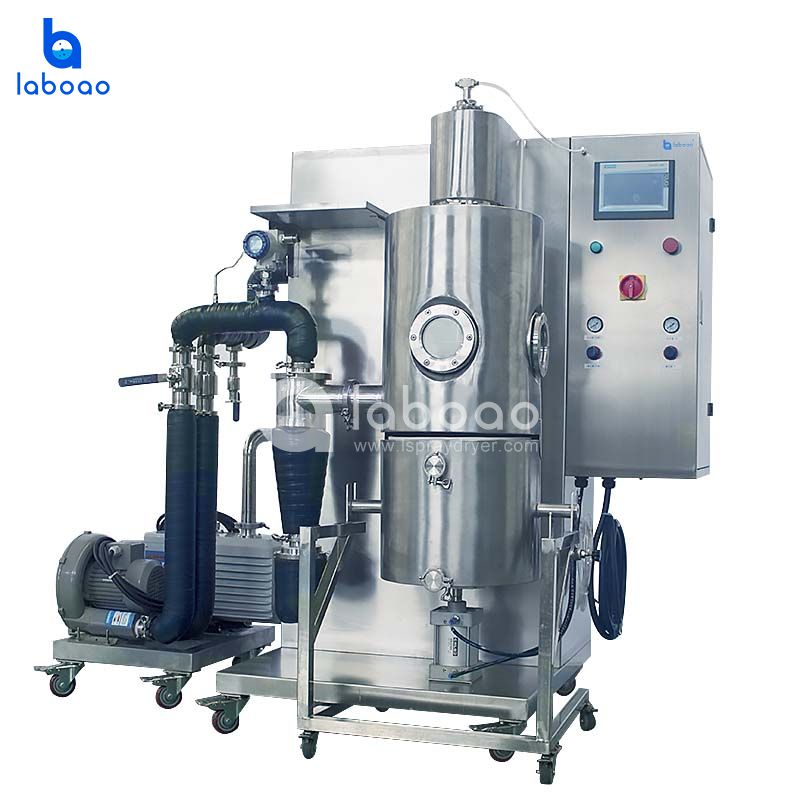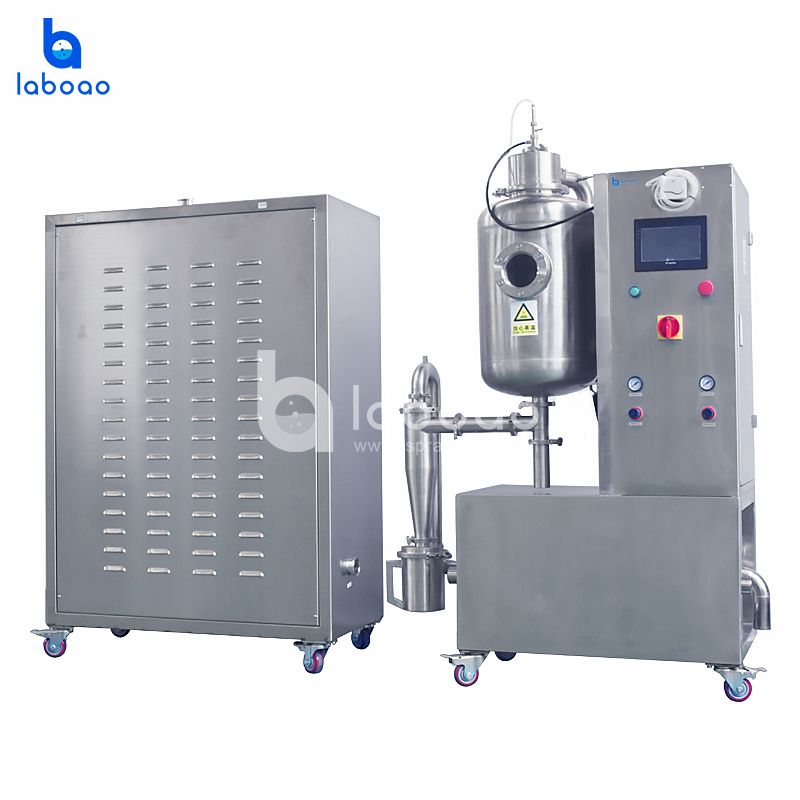
1. Basic Principles
Spray freeze drying combines the advantages of spray drying and freeze drying. It mainly atomizes liquid substances into tiny droplets, then quickly cools the droplets through the freezing process to form solid particles, and finally removes moisture through low-temperature vacuum drying. This process can effectively preserve the active ingredients in the substance and avoid thermal damage and oxidation reactions common in traditional drying methods.
2. Control factors of particle size
The particle size of a spray freeze dryer usually depends on multiple factors, including the parameters of the spray system, the physical properties of the solution, the freezing rate, and the control of the drying process. The following are several key factors:
(1) Parameters of the spray system: The type of spray head, spray pressure, and flow rate of the spray liquid will directly affect the size of the particles. Higher spray pressure will produce smaller droplets, while lower pressure will produce larger droplets. In addition, the design of the spray head is also crucial. Common spray heads such as pneumatic spray heads and ultrasonic spray heads have different spray effects, which will also affect the distribution and size of particles.
(2) Physical properties of the solution: Physical properties such as the viscosity, surface tension, and concentration of the solution have an important influence on the formation of droplets. For example, solutions with higher viscosity tend to produce larger droplets, while solutions with lower viscosity tend to form smaller droplets. The concentration of the solution also affects the size of the particles after drying, with solutions with higher concentrations usually forming larger particles.
(3) Freezing rate: The freezing process of the equipment is another key factor in determining particle size. The freezing rate directly affects the structure and size of the solid particles formed after the droplets cool. Faster freezing rates usually result in smaller particles, while slower freezing rates may result in larger particles.
(4) Control of the drying process: During the freeze-drying process, factors such as drying temperature, vacuum degree, and time also affect the final size of the particles. Excessively high drying temperatures or excessively long drying times may cause particle aggregation or deformation, affecting the uniformity of the particles.
3. Particle size control methods
Although the equipment can theoretically control the size of the particles by adjusting the above factors, there are still certain challenges in actual operation. In order to achieve precise control of particle size, it is usually necessary to optimize the formulation of the spray liquid, adjust the parameters of the spray equipment, and precisely control the conditions of the freezing and drying processes. Common control methods include:
(1) Optimizing spray parameters: By adjusting the pressure of the spray head, droplet flow rate, and spray angle, the size and distribution of the spray droplets can be effectively controlled, thereby affecting the uniformity of the particles after drying.
(2) Adjusting the concentration and viscosity of the solution: Adjusting the concentration of the solution and adding appropriate viscosity modifiers in the formula can help control the formation of spray droplets.
(3) Adjusting the rate of the freezing process: By controlling the freezing temperature and rate, ensure that the particles are evenly cooled during the freezing stage to avoid excessive expansion or aggregation of the particles.
4. Conclusion
In general, the spray freeze dryer can control the size of the particles to a certain extent. However, this process depends on the synergy of multiple factors. In practical applications, the size and distribution of the particles can be effectively controlled by adjusting the spray system, optimizing the solution characteristics, and finely controlling the freezing and drying processes. With the development of technology, the particle control capability of the equipment will continue to improve, thereby meeting the needs of various industries for particle accuracy and uniformity.




